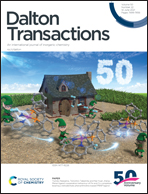A MoSe2/N-doped hollow carbon sphere host for rechargeable Na–Se batteries†
Abstract
Sodium–selenium (Na–Se) batteries are promising alternatives to lithium-ion batteries for energy storage systems owing to their high energy density and natural abundance of Na resources. However, their drawbacks of low Se loading, dissolution of intermediate sodium polyselenides in the electrolyte and volumetric expansion of Se impede their real applications. To address these issues, herein, we report a multifunctional Se host with MoSe2 nanosheets coupled with nitrogen-doped porous carbon hollow spheres for the first time. The N-doped hollow carbon sphere structure could provide a large space for Se loading (Se content up to 72 wt%) and accommodate the volume expansion of Se species upon cycling. MoSe2 was chosen as a polar coupling component for the carbon matrix, owing to its low conversion reaction voltage. Based on density functional theory (DFT) calculations, the MoSe2 nanosheets coupled with hollow spheres could enhance the adsorption energy of the host to polyselenides chemically, which benefits the immobilization of polyselenides. Therefore, as a cathode for Na–Se batteries, the as-prepared composite exhibits excellent energy storage performance with long cycling life and superior rate performance. Our study of introducing transition metal selenides into Na–Se batteries may stimulate the designing of diverse Se-based cathodes.



 Please wait while we load your content...
Please wait while we load your content...